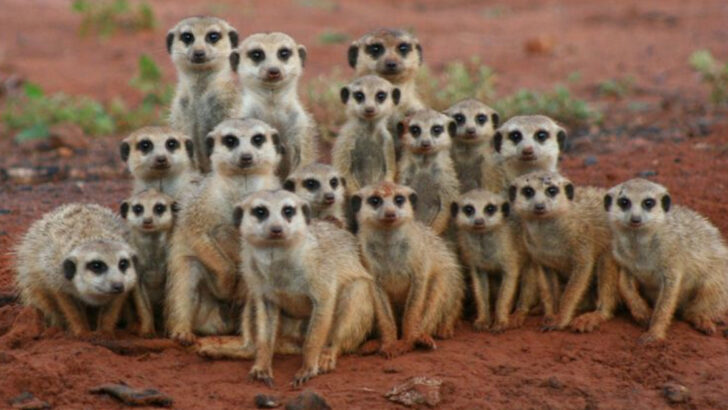They may look like furry little clowns, but meerkats are masterminds in disguise. These desert dwellers don’t just live in groups—they thrive in them. With underground tunnel cities, rotating babysitter shifts, and built-in alarm systems, they’ve turned survival into a community art form. One minute they’re sunbathing with their bellies up, the next they’re taking down a scorpion with military precision. Every member has a role. Every chirp has meaning. Every glance, every tail twitch—it all matters. So if you think you know meerkats, think again. There’s a reason scientists can’t stop studying them— and once you read these 15 reasons, you’ll be just as obsessed.
Cooperative Childcare
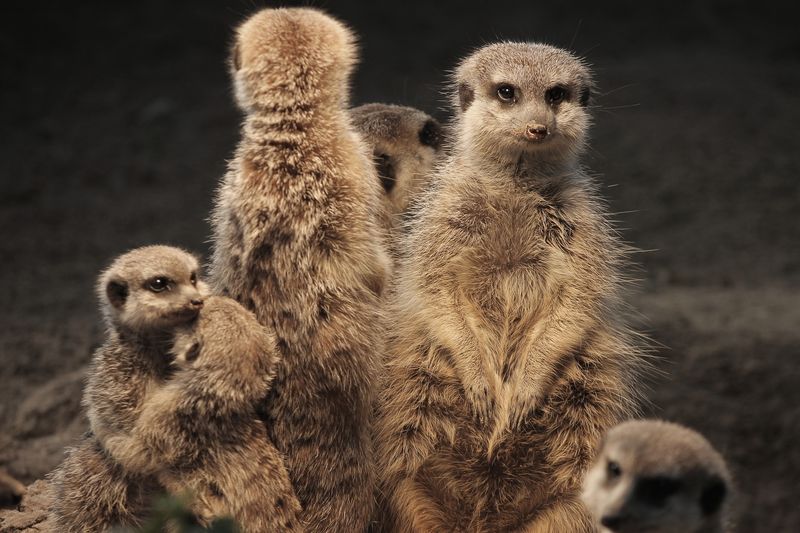
In the heart of the Kalahari, meerkats exhibit a communal spirit that’s hard to ignore. Their cooperative childcare system is exemplary, with all members pitching in to raise the young. This shared responsibility ensures that pups receive constant care and protection.
Meerkats stand guard while others forage, demonstrating trust and coordination. This reliance on each other not only solidifies their social bonds but also increases their survival rates. Interestingly, babysitting duties are shared among siblings and non-related group members alike, highlighting their remarkable social structure.
Sentinel Behavior
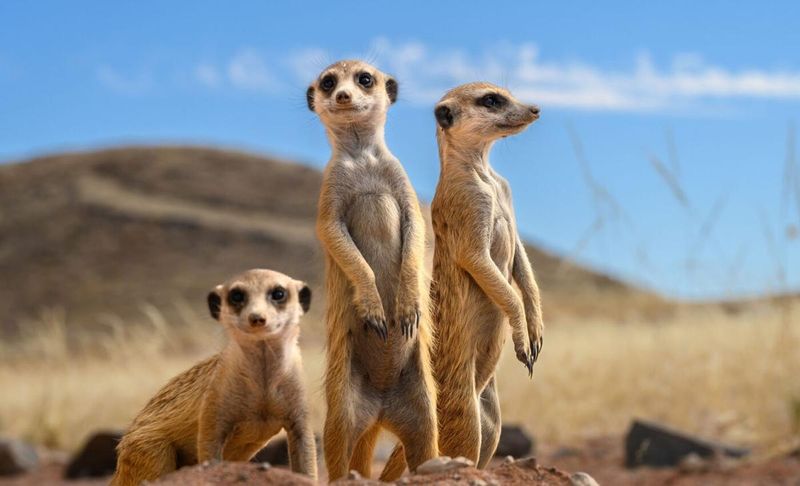
Vigilance is a hallmark of meerkat society. While some dig for food, at least one meerkat acts as a sentinel, watching for predators. This lookout system is a testament to their communal living and trust.
The sentinel meerkat stands on its hind legs, scanning the horizon and ready to alert the group with a distinct call. This behavior reduces individual stress, as members take turns being the lookout. This rotational system is efficient and showcases their ability to work together seamlessly.
Complex Communication
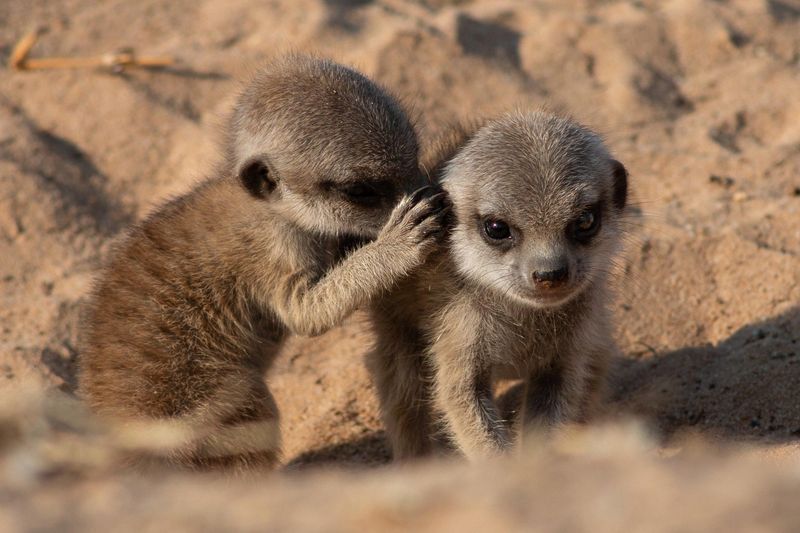
Meerkats boast a sophisticated communication system, using a variety of vocalizations to convey messages. Their calls range from alarm signals to coordinate movements, showing an intricate understanding of social dynamics.
Each sound has a specific meaning, allowing them to alert others to danger or rally the group. This complex language helps maintain order within the group and strengthens bonds. Their ability to communicate effectively is a key factor in their survival and success in the wild.
Social Hierarchy
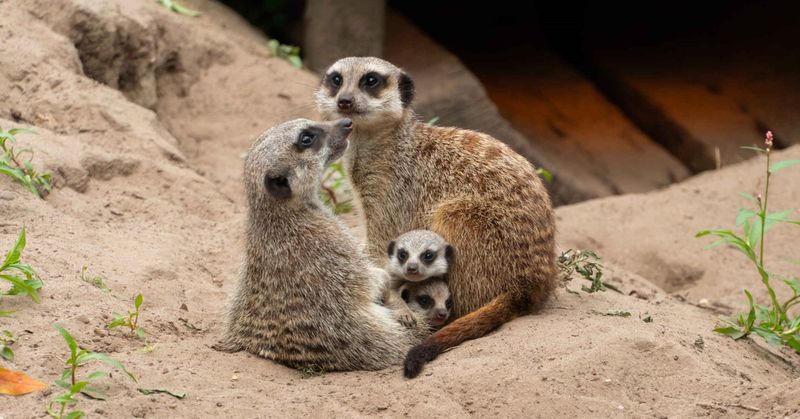
Dominance and order are central to meerkat groups, with a defined social hierarchy led by an alpha pair. This structure dictates mating and foraging rights, ensuring group harmony.
The alpha pair leads by example, setting the tone for cooperation and discipline. This hierarchy minimizes conflict and promotes stability, allowing the group to function efficiently. New members learn quickly, adapting to the established order. This organized social system is vital for their collective success.
Teaching the Young
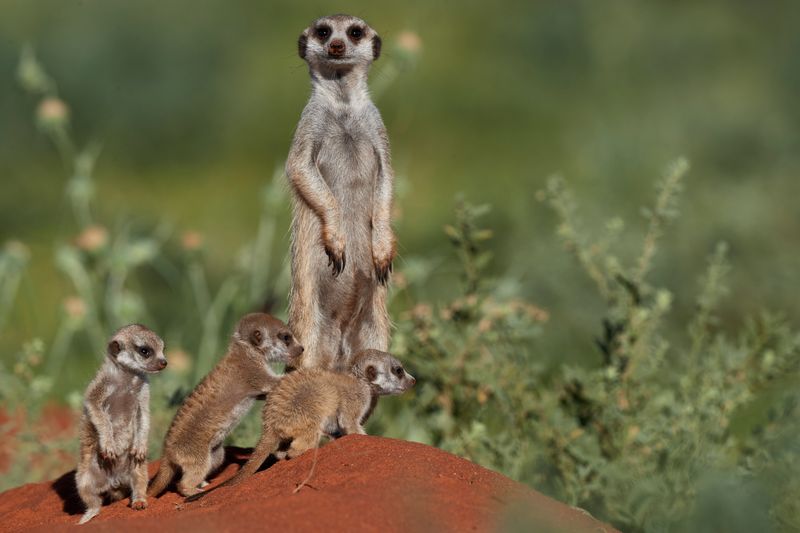
Education is a cornerstone of meerkat life, with adults actively teaching the young vital survival skills. This includes hunting techniques and recognizing threats.
Adults demonstrate by example, guiding pups through complex tasks such as handling scorpions safely. This hands-on learning approach ensures that the next generation is well-equipped for life in the wild. This nurturing aspect of meerkat society underscores their intelligence and adaptability.
Foraging Cooperation
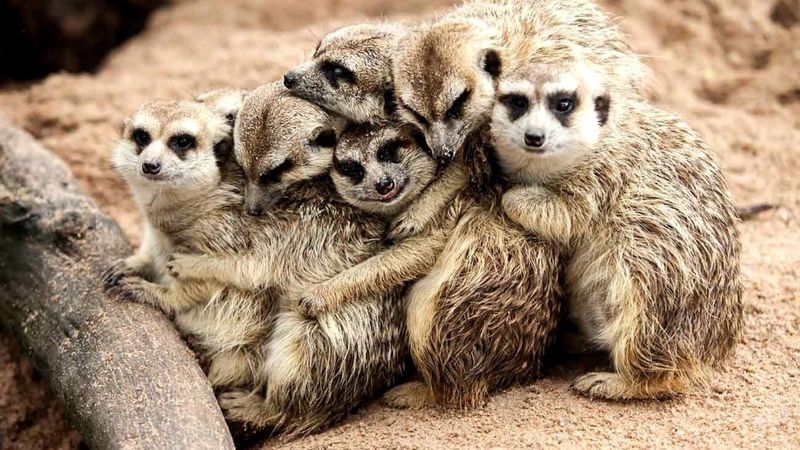
Teamwork is essential for meerkat survival, particularly during foraging. They coordinate efforts to locate and uncover food, such as insects and small vertebrates.
This cooperative approach increases efficiency and reduces vulnerability to predators. Each meerkat knows its role, contributing to the group’s success. This shared responsibility fosters a strong sense of community and mutual reliance, crucial for thriving in their harsh environment.
Playful Nature
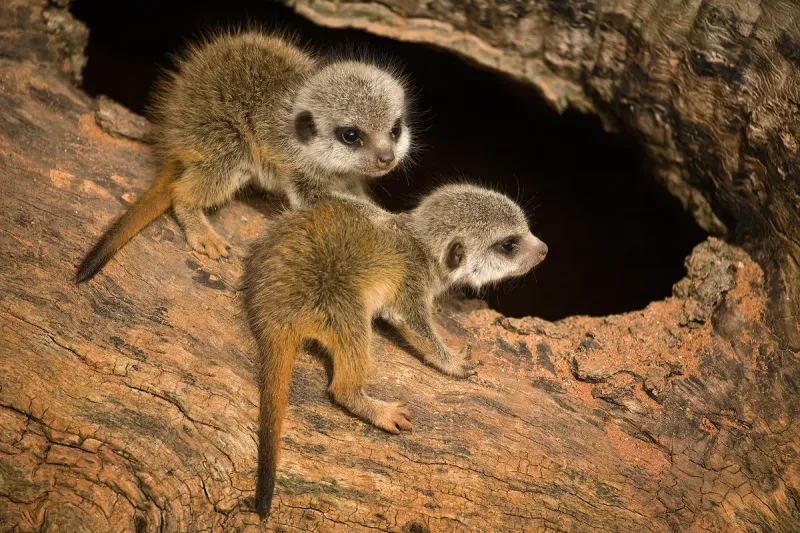
Meerkats are known for their playful antics, especially the young ones. This behavior isn’t just for amusement; it’s crucial for developing social and physical skills.
Through play, they learn coordination, communication, and the hierarchy of their group. This playful nature strengthens social bonds and prepares them for adult responsibilities. Their natural curiosity leads to innovative problem-solving skills, showcasing their intelligence in unexpected ways.
Burrow Construction
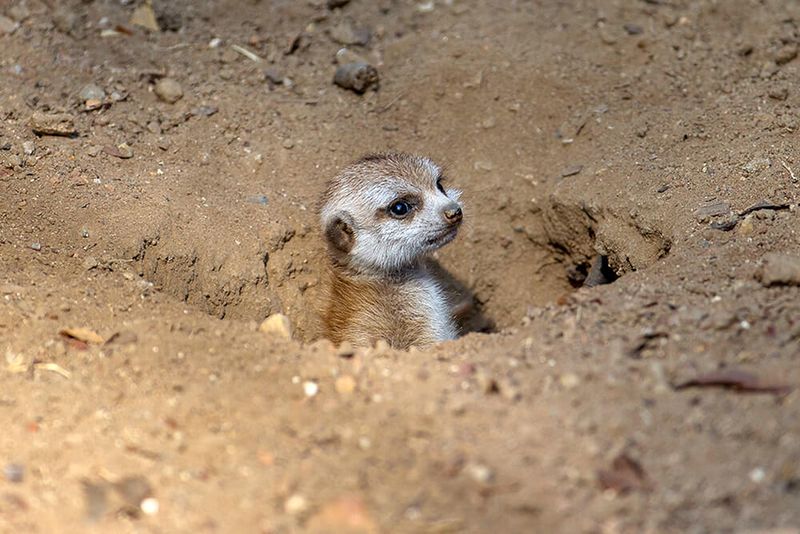
Craftsmanship meets teamwork in meerkat burrow construction. These intricate networks serve as shelter and protection against predators and harsh weather.
The complex design includes multiple entrances and tunnels, showing their architectural prowess. Maintenance is a collective effort, reinforcing their cooperative spirit. Burrow construction highlights their intelligence and ability to adapt to environmental challenges, ensuring their group’s safety and comfort.
Adaptability to Environment
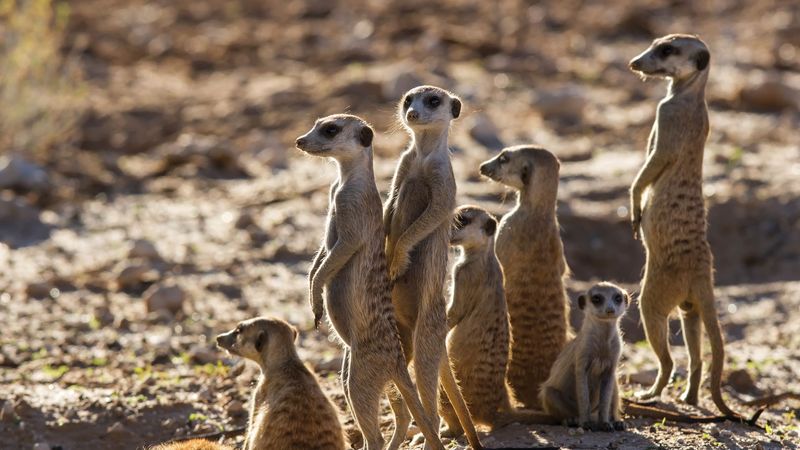
Adapting to the harsh desert environment is a testament to meerkat resilience. They exhibit behaviors that help them thrive, such as regulating their body temperature by sunning or seeking shade.
Their burrows provide a stable climate, protecting them from extreme temperatures. This adaptability ensures their survival and demonstrates their remarkable ability to handle environmental stressors. Their resourcefulness is key to their continued success in the wild.
Alarm Calling System
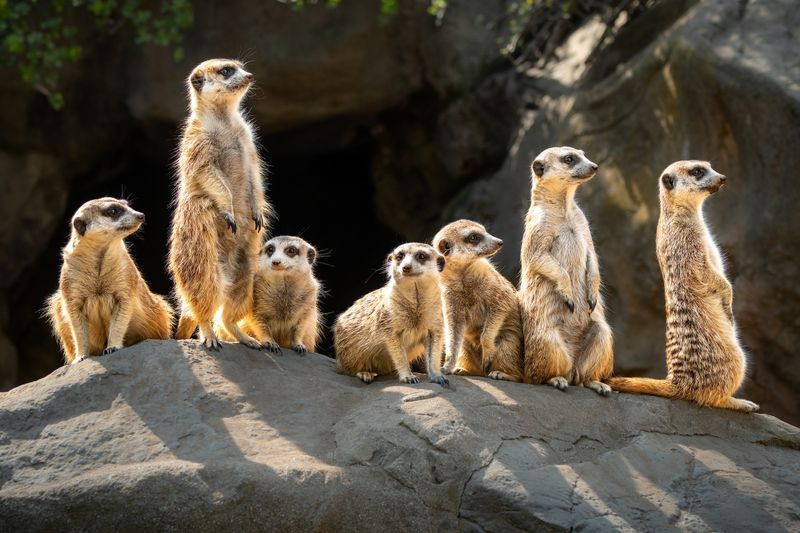
The alarm calling system in meerkats is an essential part of their defense strategy. Each type of call corresponds to a specific threat, enabling the group to respond appropriately.
This system relies on keen observation and quick communication, reducing the risk of predator attacks. By understanding these calls, meerkats can coordinate their actions effectively, showcasing their social intelligence and cooperation. This vigilant communication is pivotal for their protection.
Strong Family Bonds
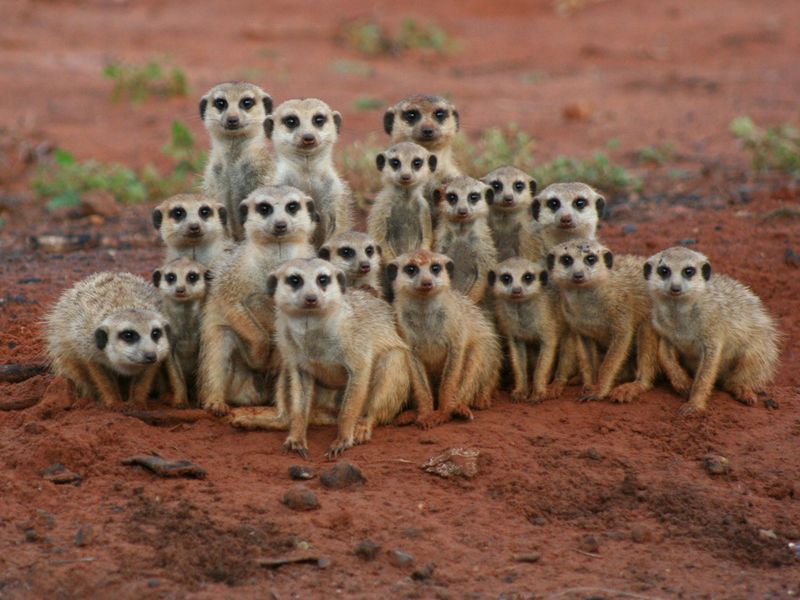
Family ties run deep in meerkat society. These affectionate bonds extend beyond immediate family, strengthening the group as a whole.
Their social structure is built on trust and cooperation, which is evident in their daily interactions. This familial closeness fosters loyalty and enhances group cohesion, crucial for survival. Their ability to maintain these strong connections underscores their social genius and emotional intelligence.
Survival Skills
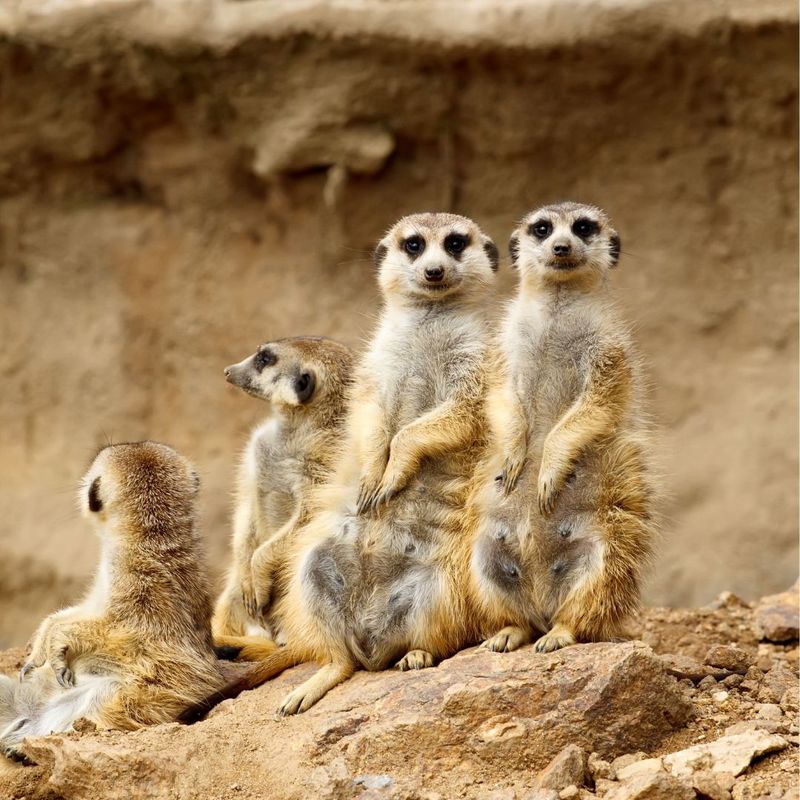
Resourcefulness defines meerkat survival. Their ability to find water and prey in the arid desert showcases their ingenuity.
They employ various strategies, like digging for insects and utilizing moisture from their food. This resourcefulness is passed down through generations, ensuring their survival in challenging environments. Their survival skills reflect a deep understanding of their habitat and a collective effort to overcome its challenges.
Mimicking and Learning
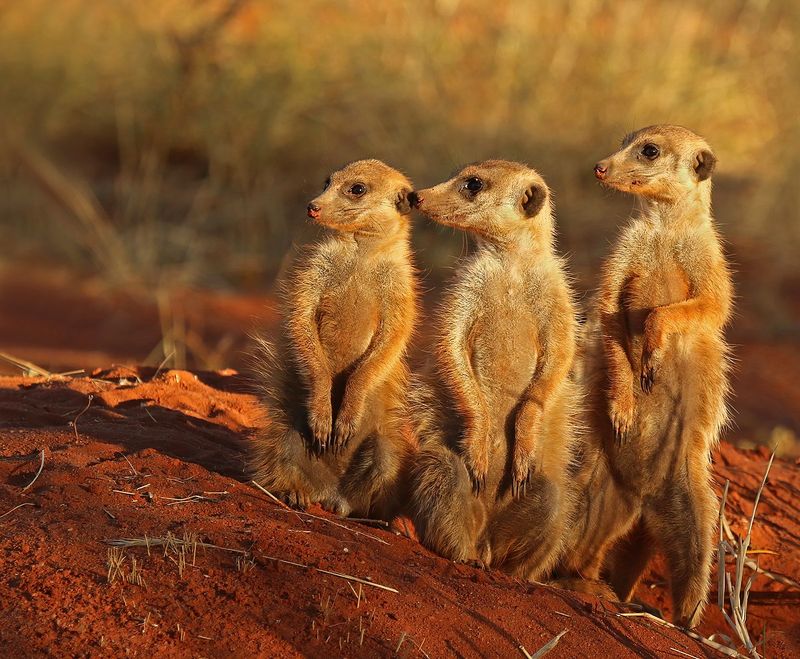
Meerkats are keen observers and learners. They often mimic each other’s behaviors to acquire new skills, a testament to their intelligence.
This mimicking behavior aids in social learning, allowing them to adapt quickly to new situations. It fosters innovation and keeps their group dynamic flexible. Their ability to learn from one another further solidifies their reputation as social geniuses.
Innovative Problem Solving
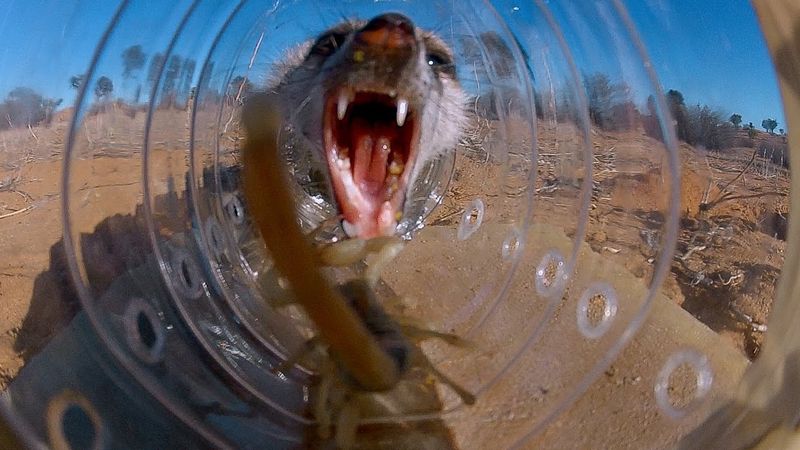
Problem-solving is at the heart of meerkat life. Faced with daily challenges, they employ innovative strategies to overcome obstacles.
Whether it’s finding food or evading predators, their solutions are creative and effective. This ingenuity is passed within the group, ensuring collective success. Their problem-solving abilities highlight their intelligence and adaptability, making them fascinating creatures to observe.
Leadership in Groups
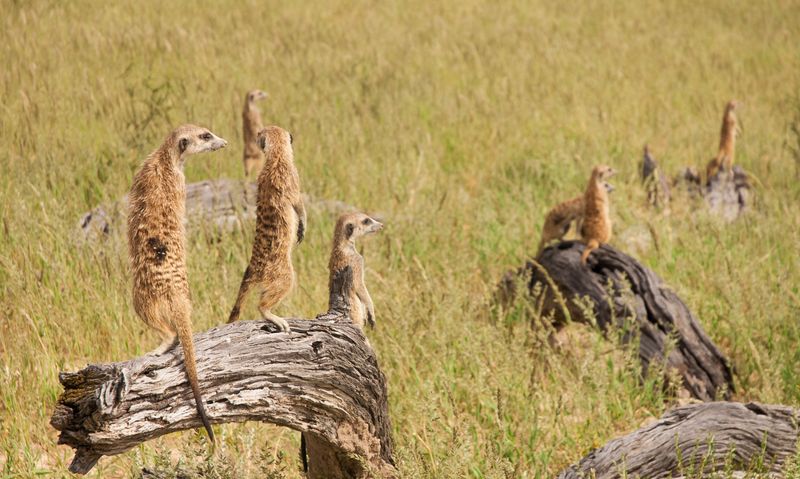
Leadership is crucial in meerkat groups, with the alpha pair guiding and making key decisions. Their leadership style promotes unity and direction.
Effective leaders inspire trust and cooperation, ensuring the group’s success. This leadership structure is respected and followed, maintaining order and efficiency. Their ability to lead showcases their social intelligence and is a cornerstone of their survival strategy.

